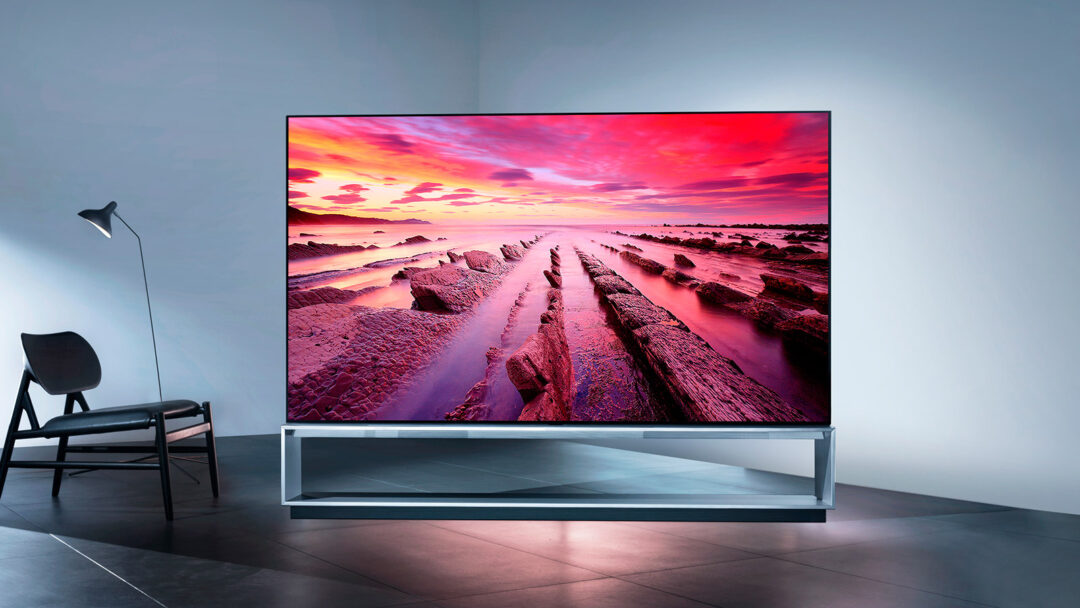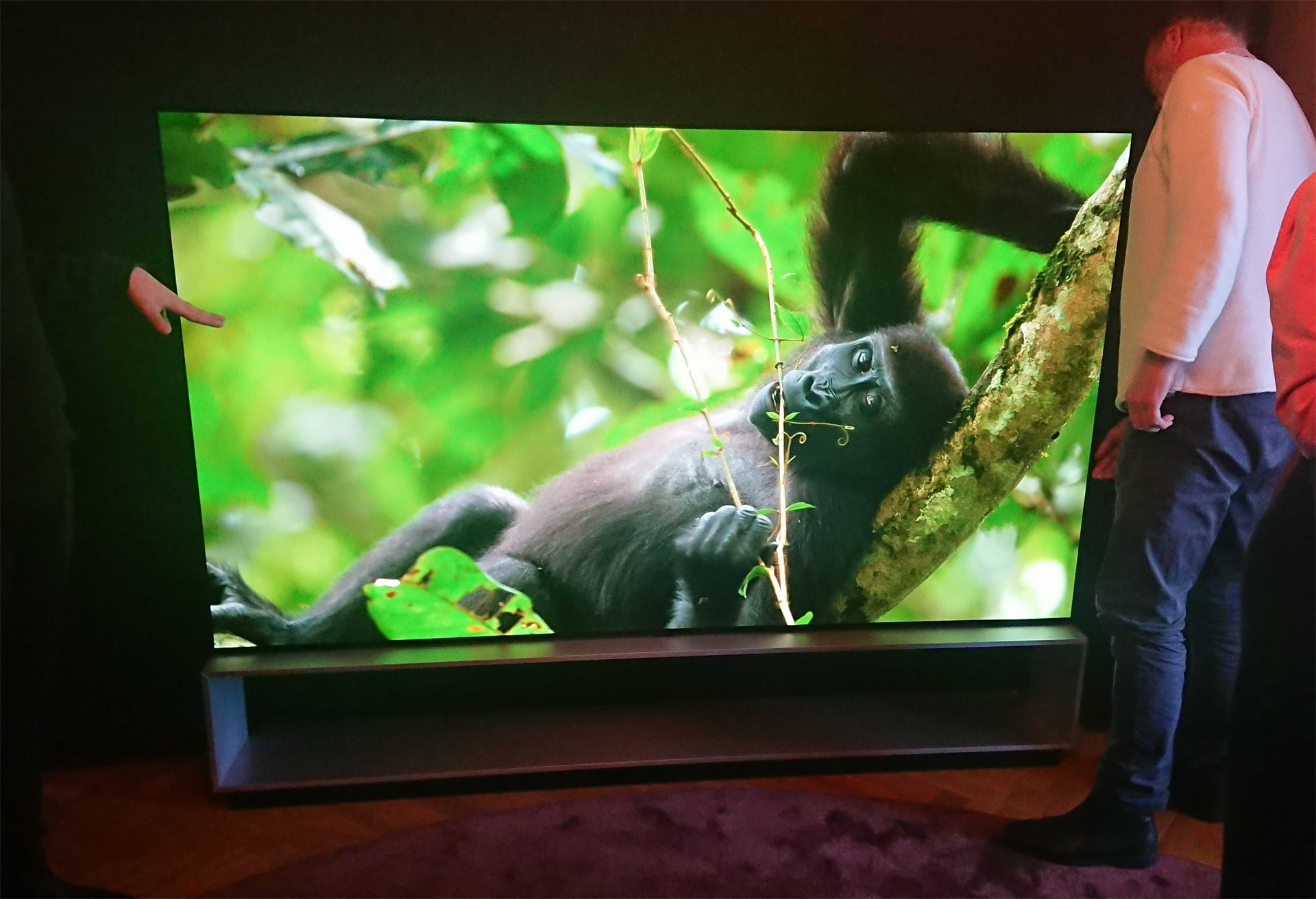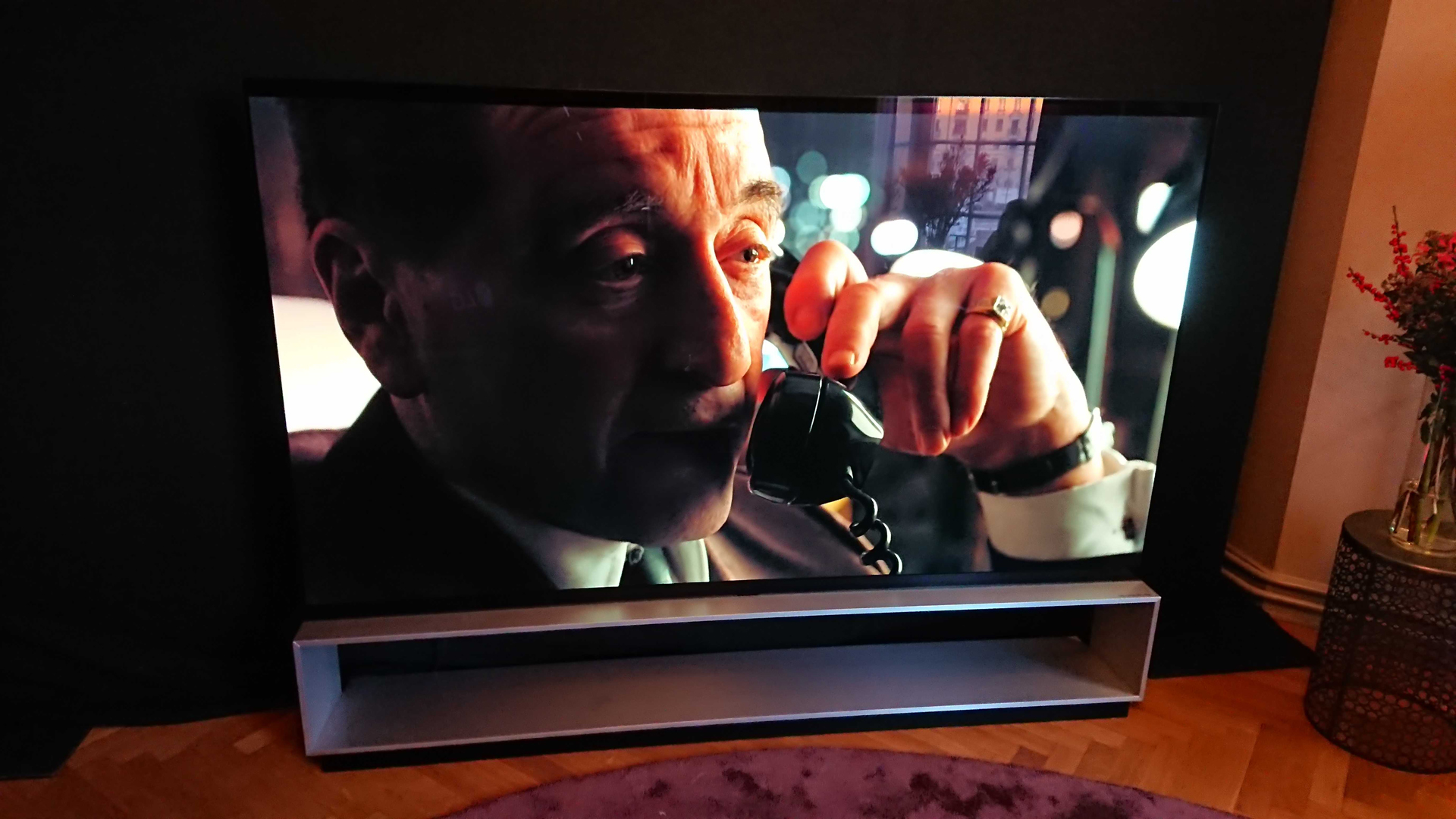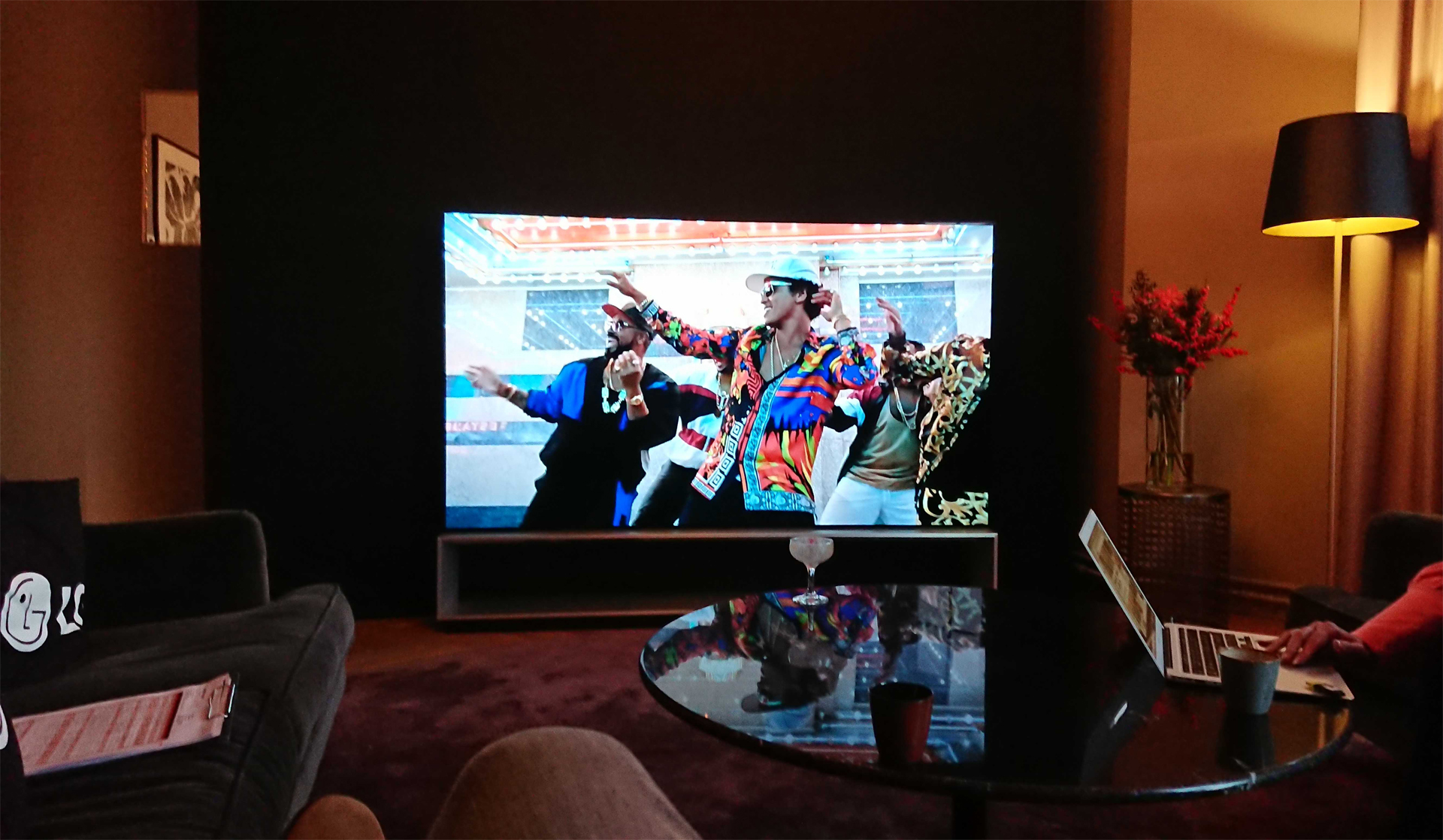In today’s TV world, you have to hit the big drum to stand out. Even fairly ordinary and “popular” TV screens have now got excellent picture quality, and even the largest 4K screens have fallen sharply in price: Yes, even a grandmother of 75 can afford a 75-inch if she wants.
What does this mean in practice? Well, first of all, it means that the TV producers have to think big when they launch a new showoff product. It also means that you who are a newly rich football player, e-sports icon or bitcoin millionaire (!) Have to dig deeper into your wallet to get a TV out of the ordinary.
LG OLED88Z9: 88 ”OLED with 8K resolution
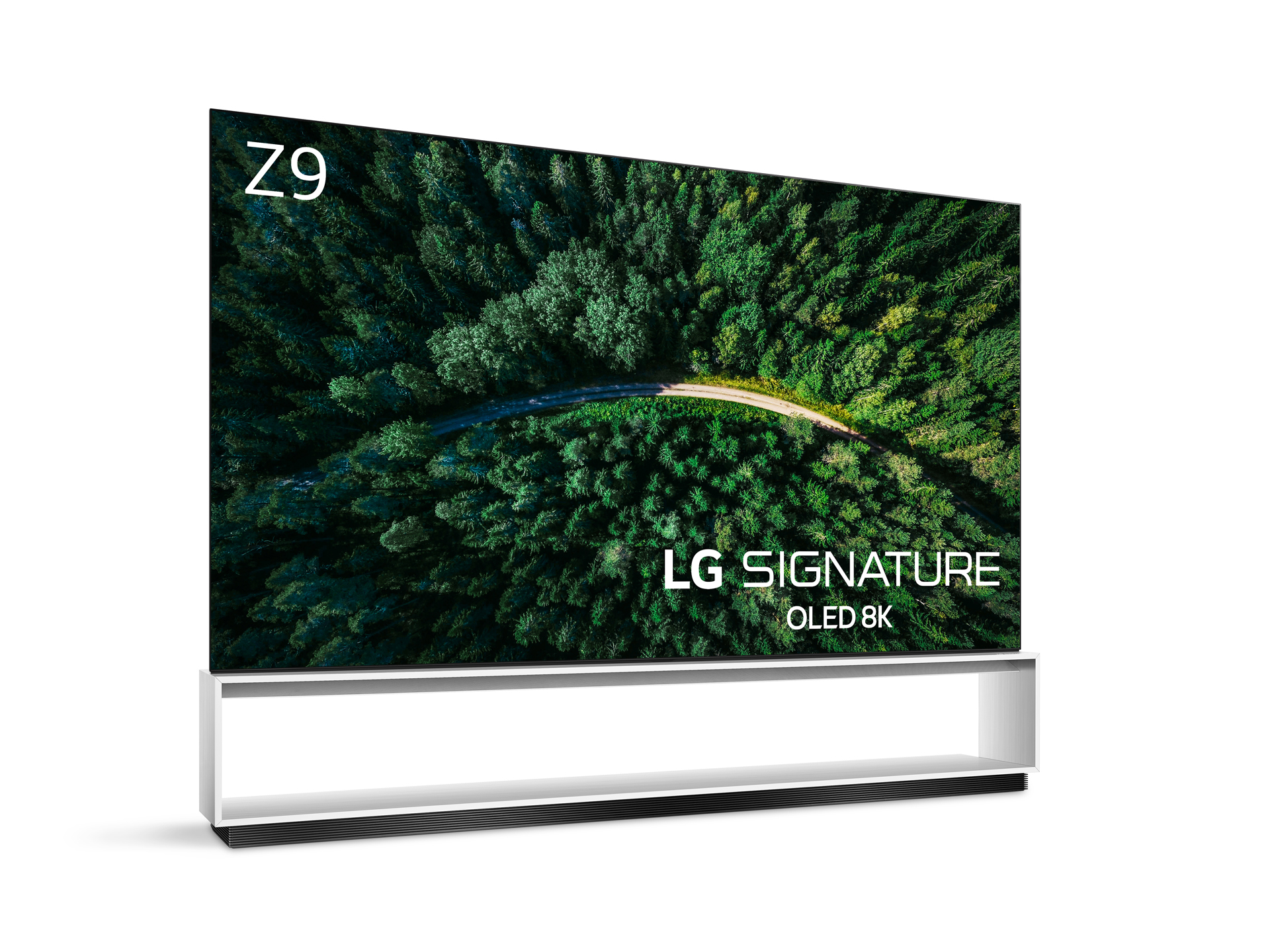
LG’s OLED TVs have already become a favorite among many photo enthusiasts.
Although arch-rival Samsung lurks in the background with its QLED monitors, there is no doubt that LG models such as the OLED65C9 and OLED65E9 have set a standard for image quality, especially when it comes to black level, contrast and viewing angle.
With the top model OLED88Z9, LG has stretched the technology elastic even further – as far as they can as of today. It uses an 88-inch OLED panel which is the largest LG delivers, and also the very first with razor-sharp 8K resolution. Two world news at once there, that is!
8K OLED panels have admittedly been shown at trade fairs before, but then only as prototypes connecting to a powerful PC. It is only now that technology has found its way to a TV you can actually buy.
For the record: Our test is based on a short session with the LG screen, during a presentation in Stockholm just before Christmas. After the press and interior bloggers had seen theirs, we got to take a closer look at our own selected test material. Although we normally prefer to test TVs at home, we make an exception in this case. It also has its practical advantages, as the Z9 weighs over 100 kilos, and is almost two meters wide!
Design
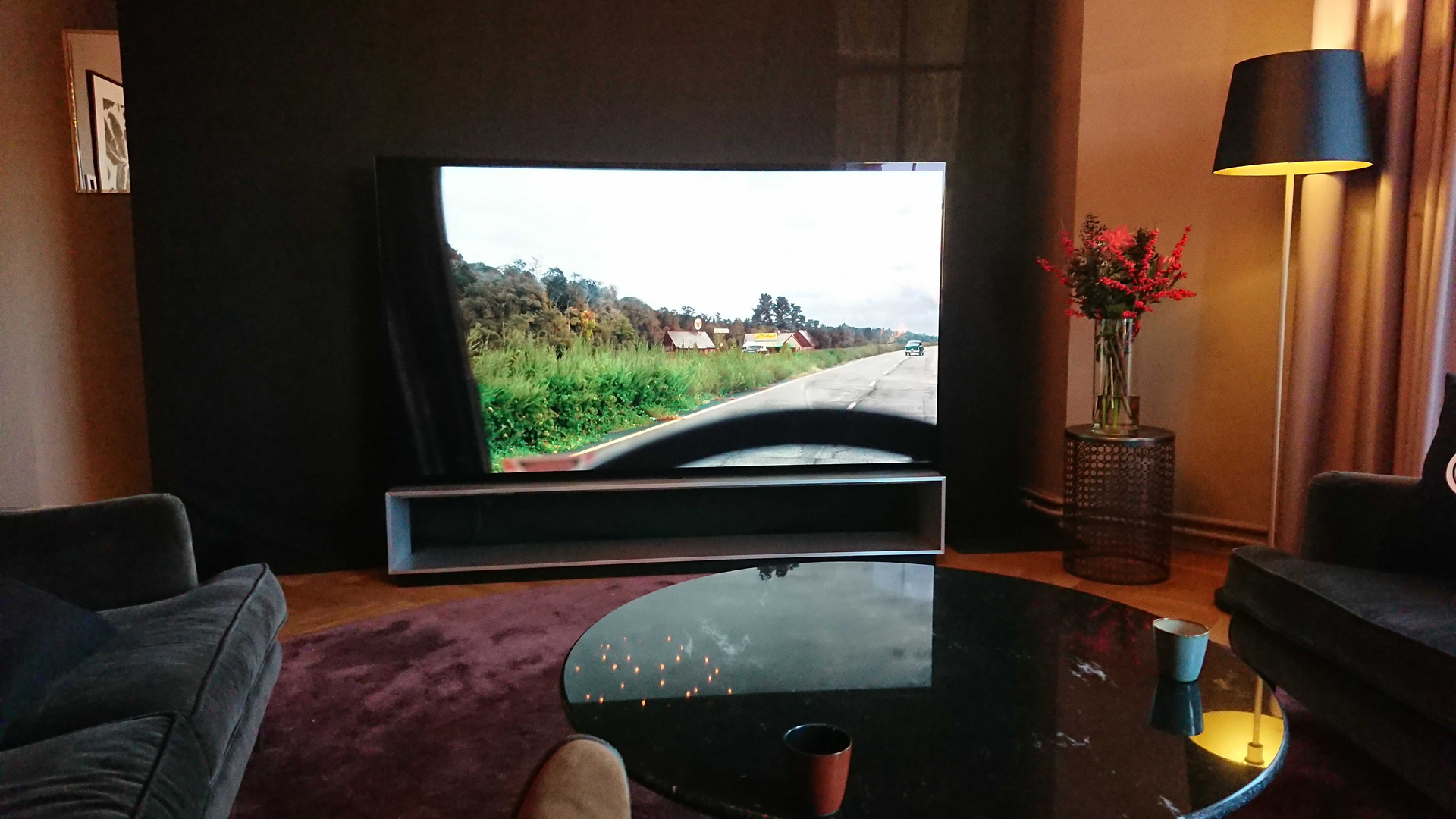
There is no doubt that OLED88Z9 is difficult! Nevertheless, like most OLED screens, it has a slim and modern form factor. The panel itself is slightly thicker than smaller models, presumably to maintain the shape and avoid wave effects. But there is no doubt that the TV is stylish to watch visually. The only thing that might be a little embarrassing is the mirror-shiny surface, which is sensitive to greasy fingers as well as reflections of the surroundings.
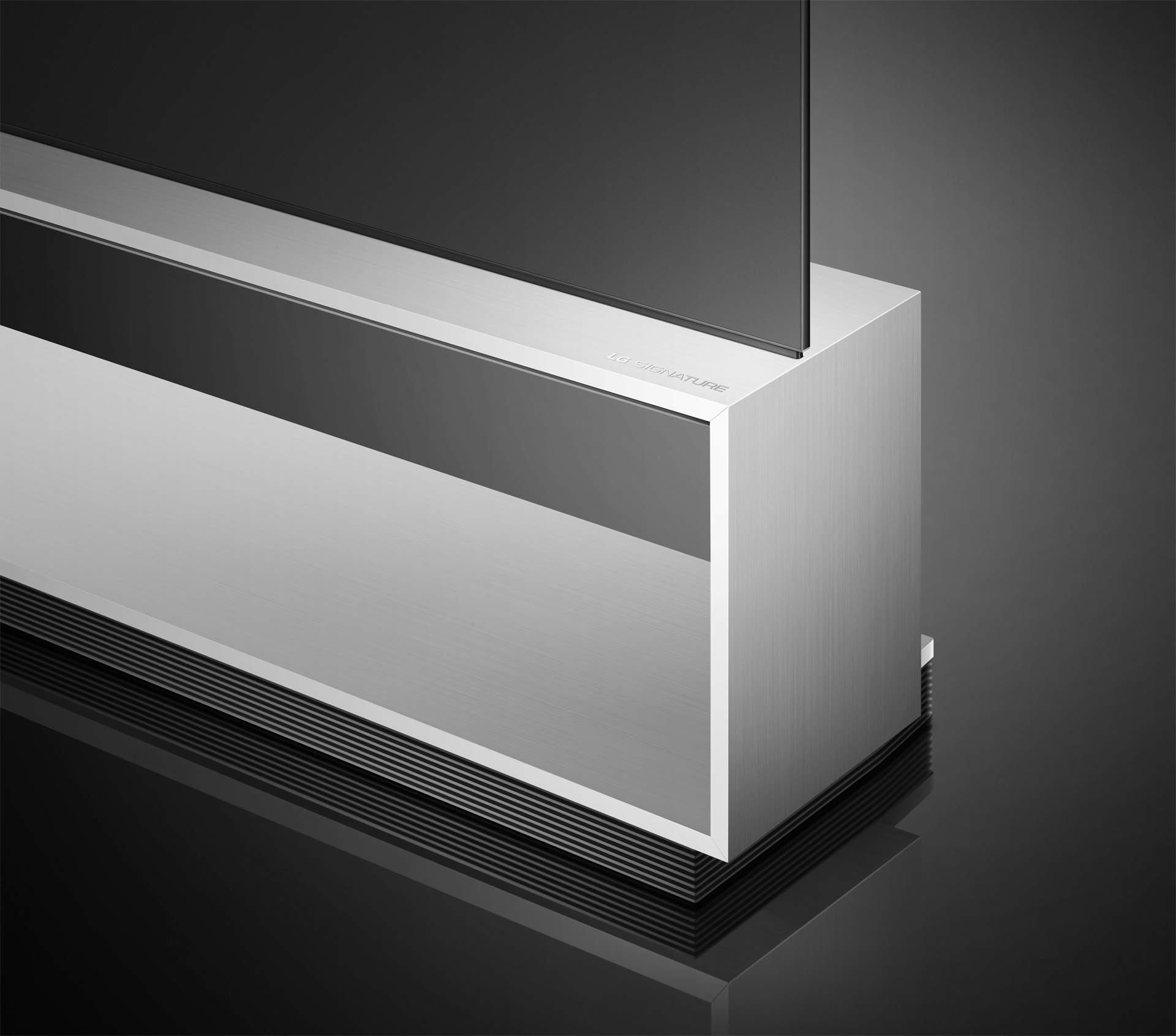
It is also part of the story that the Z9 cannot be wall-mounted: it comes instead with a stylish rectangular base in a brushed metal finish. Here are also all of the speakers, electronics and connections mounted. Since the shelf has an opening in the middle, it can certainly be tempting to place a TV receiver and other video sources here – even if it breaks a bit with the aesthetics.
Ease of use and features
When it comes to operation and user interface, the OLED88Z9 is just like any other LG TV of recent date. It comes loaded with the operating system WebOS (4.0) which we already have good experience with. However, LG has made sure to upgrade the remote control to a nicer variant in brushed metal. It has the same functionality as the regular Magic Remote with a mouse pointer, but clearly feels more exclusive to touch and feel. We would like to see LG include this on future premium models!
The LG screen also shows muscle on the connection front: as one of the few TVs on the market, it has as many as 4 HDMI 2.1 compatible inputs. This means that each of the video inputs is capable of receiving 8K signals at up to 60 frames per second, or 4K video at up to 120 frames per second! As of today, there are no formats that deliver this, but it has a lot to say for the future compatibility with external 8K video sources, whenever they come.
HDMI 2.1 also offers other sweets, such as the audio return channel eARC for high-resolution sound, and not least Auto Low Latency Mode (ALLM) and Variable Refresh Rate (VRR) which ensures the lowest possible input layer and smooth performance for gaming use.
OLED88Z9 is also equipped with an external “upgrade box” that can be replaced if LG releases physical upgrades to the Z9 in the future.
Image quality
So to the heart of the matter, how good does OLED88Z9 really look alive? Well, when you combine all the OLED qualities we are familiar with, quadruple the resolution and blow the image up to two meters wide, it looks as expected extremely fierce. But it takes some time to absorb all the impressions.
At first glance, the Z9 really “only” looks like an OLED in XXL format. All the known strengths are in place, with extremely strong contrast, bottomless black level and a wide viewing angle with even colors wherever you sit. All this is of course a good start, but not something groundbreaking.
It is first and foremost with the image sharpness that the Z9 really breaks boundaries. I myself have tested several 8K monitors, including flagship models from Samsung and Sony with LCD technology, and they look great, by all means. But drag me backwards into the bird box, how good 8K looks on an OLED screen!
There is obviously something about the resolution, the absence of unnecessary filters in front of the screen, and the fact that each of the 33 million (!) Small pixels lights up independently – which makes the image look completely magical. The image appears completely smooth, homogeneous and solid.
Looking at the 8K screen from a normal seating distance of about 3 meters, is actually surprisingly reminiscent of seeing the real world through a window. Even though the image has no 3D effects, it still feels three-dimensional due to the extreme sharpness. You can move your gaze and “look inwards” in the picture as if it were real. The absence of visible pixel structure makes the illusion more believable.
The session at LG initially consisted of typical 8K demo clips from a USB memory stick. Here we are talking about targeted productions that are made to impress, often with slow-moving, panning shots and close-ups of nature and wildlife. Of course it looks great, but it is not glossy pictures of an orangutan we have come to see. We care much more about “real world content”, series and movies you can watch today!
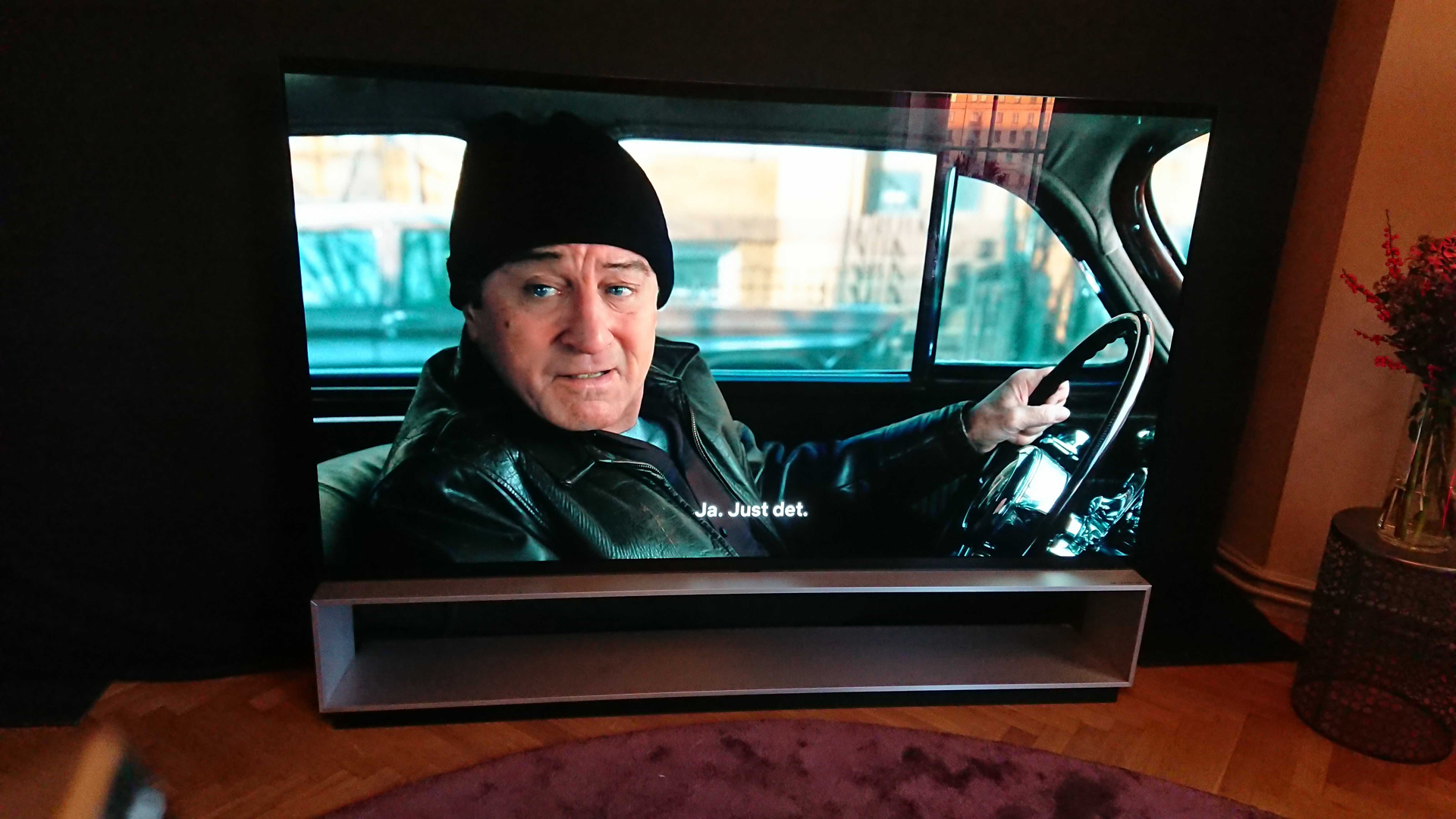
A press on the remote takes us to Netflix and the big movie The Irishman. Served in 4K resolution with HDR video quality (Dolby Vision), it is quite representative of content that is easily accessible to most people. Here, the AI upscaling of the LG screen is put to the test to fill the 8K screen with sharp images, but it does it with brilliance. The image processing does an extremely good job, and if we had not known better, it could just as easily have been a real 8K film we watched.
I have already managed to watch Scorsese / De Niro’s masterpiece a couple of times, but via the LG screen I see details that I have so far missed on less capable TVs. No wonder really, since we are probably sitting with a TV that is at least as revealing as the one the technicians used in the studio! Both aggressive cutting and sloppiness with the CGI effects are easily seen here. But even small details in the plot become clearer. Like Frank Sheeran (played by De Niro) shivers a little when he talks about his memories of the war. Or that Joe Pesci wrinkles his nose a little extra every time he talks about someone being “taken”. Here you experience getting extremely close to the action.
Glossy glass
Perfectionists as we are, we usually have a few things to draw on. Like most OLED screens, the 88OLEDZ9 has a relatively glossy panel glass, which tends to reflect much of its surroundings. And this naturally comes in handy when the screen area is in excess of two square meters!
The hotel room that LG had chosen for the occasion had many windows overlooking Stockholm city. These, of course, had to be screened to avoid reflections, and get full enjoyment of the image quality.
There is also no doubt that the Z9, like most OLEDs, thrives best in subdued, light-controlled environments. Although the contrast from 0-100% is excellent, the maximum brightness is limited upwards to about 700 nits. That’s only half of what, for example, the Sony KD-85ZG9 or Samsung Q950R manages to squeeze out. Thus, the LG screen is best suited in rooms where you have the opportunity to screen for the light, especially when watching movies. But then we add that none of these keep up with the OLED screen’s superb black level. Under the right conditions, we can hardly imagine a better TV for movie lovers than the worst from LG.
Sound quality
Although barely visible to the naked eye, the LG OLED88Z9 comes equipped with a fairly capable sound system. Hidden in the shelf are speakers that fire the sound out through the rectangular opening. At the bottom are two dedicated bass speakers that contribute to the sound foundation. The sound system supports Dolby Atmos 3D sound on paper, but has no dedicated speakers for height effects.
We should not claim that the sound is in class with the razor-sharp picture, but it is miles better than ordinary TVs. The speakers deliver warm and rich sound, with a distinct and clear voice reproduction. There is also enough bass to create engagement in sound effects as well as guitar and bass drums. We took a round of Boz Scagg’s live concert from Youtube, and immediately found the beat.
In other words, there is no need to think about any soundboard here. If you are going to upgrade the sound from the LG screen, it is more natural to think of a full-blooded surround sound system with separate speakers.
A glimpse of the future
With the first proper look at LG’s 8K-TV done, I must admit that the list is raised. However, the biggest aha experience came when I returned home to Norway and back to my “ordinary” 75-inch 4K TV! The once top-spec screen appeared with a not so hefty longer, and annoyingly enough I now notice the pixel structure and small “saw teeth” that I barely knew were there! This is how it can go: Once you have seen 8K properly, there is clearly no way back. The list is up!
LG OLED88Z9: Conclusion
Unfortunately, it was a relatively short session with LG’s very first and largest 8K OLED TV. But the impression remains, as if burned into the retina! The combination of extreme sharpness and colossal contrast, creates an image that is “to die for” for film enthusiasts and others who are interested in magnificent image experiences.
LGOLED88Z9 has a price that makes it unattainable for most ordinary wage earners. But if you have the desire and affordability, there is no doubt that this is one of the very, very rawest TVs that can be bought for money right now.

We think
LG's flagship TV combines all the great qualities we know from OLED (deep black level, extreme contrast and wide viewing angle), with a giant and razor-sharp 8K image! The price is of course stiff, and the LG OLED88Z9 does not have as bright brightness as some of the LCD competitors.
29999 €
Specifications
- Size / type: 88 ”8K OLED
- Resolution: 7680 x 4320 (8K Ultra HD)
- Operating system: WebOS 4.0
- Inputs: 4 HDMI (2.1), 3 USB
- Outputs: Optical digital audio output, HDMI eARC
- HDR: HDR10, Dolby Vision, HLG, Technicolor
- Other: Dolby Atmos compatible 4.2 sound system
- Web: lg.com.
